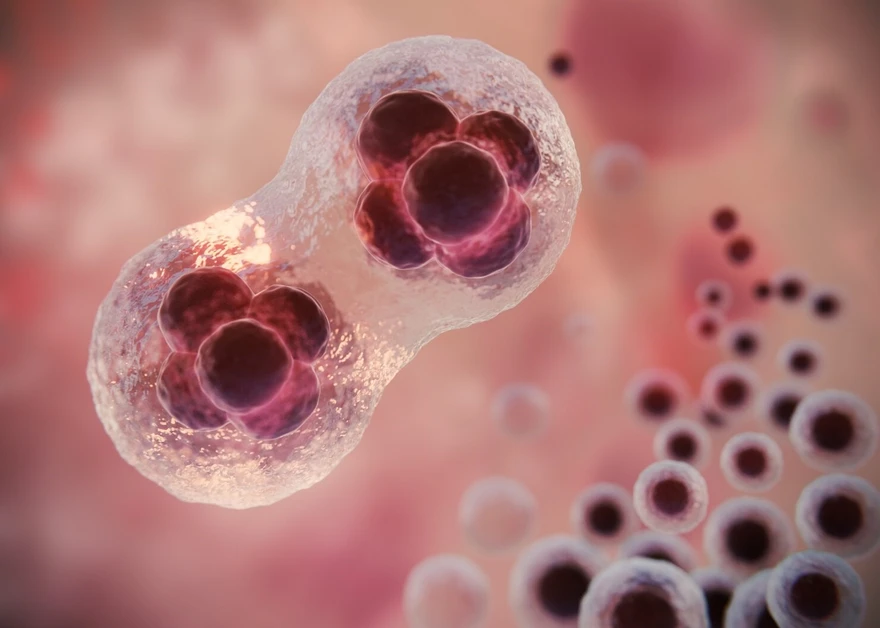Preventive Healthcare
Blood Cells: Types and Functions in the Human Body
5036 Views
0

Can you believe that just two cells, the sperm and ovum, differentiate into almost 100,000,000,000,000 cells to make up your body? And while it may seem excessive, every single cell has its function. The cell is the simplest form of life, and blood cells are the most vital as they are primarily responsible for transporting nutrients and oxygen to the rest of the body and bringing waste materials and CO2 to be expelled from the body. Here is all you need to know about the different types of blood cells and why they are needed in the body.
Blood Cells
The body contains twenty to thirty trillion blood cells. These cells are seven microns in diameter and have the width of a spider-web silk strand. Your blood cells, skin, bone and nerve cells, are made of hydrogen, oxygen, nitrogen, carbon, magnesium, potassium, copper, zinc, silver, gold and numerous other elements that help their function.
Types of Blood Cells
There are three major types of blood cells: white blood cells, red blood cells and platelets. Here is a little more insight into the different types of blood cells.
White Blood Cells
These are the types of blood cells that help your body fight against infections. They make up your immune system and come in three different types.
- Granulocytes: neutrophils, basophils and eosinophils
- Lymphocytes: T lymphocytes and B lymphocytes
- Monocytes
Red Blood Cells
These are the body's oxygen carriers; they take oxygen from the lungs and transport it to the other cells in the body. The protein haemoglobin present inside the red blood cells is responsible for the transportation of oxygen.
Platelets
These are the types of blood cells that aid in the clotting of blood. When you get a cut or bruise, the platelets stick together and stop excess bleeding.
Development of Blood Cells
All the different types of blood cells in the human body start their journey as blood stem cells formed in the bone marrow. These stem cells then divide and multiply within the bone marrow and produce the other types of blood cells. The blood stem cell grows into any blood cell your body needs, including red blood cells, white blood cells or platelets.
The bone marrow creates a large number of blood cells per second. A well-oiled and working system ensures that your body creates the right amount of each type of blood cell to be healthy. However, when there is a glitch in the system, the blood cells do not develop properly or rapidly multiply, causing diseases like blood cancer.
Functions of Different Types of Blood Cells
Red Blood Cells
Your bone marrow creates 2-3 million red blood cells every second. These red blood cells are also known as erythrocytes. They are the most common type of blood cells. They usually circulate through the body for 120 days before they are removed by specialised cells called macrophages.
In humans and other mammals, mature red blood cells do not have a nucleus; this gives the blood cells more space to store haemoglobin, the oxygen-binding protein that helps transport oxygen to the rest of the body. Red blood cells have a biconcave shape that helps increase the cells' surface area, allowing oxygen to diffuse across the surface. If a blood test shows low haemoglobin, you may be at risk of anaemia. In this case, you may appear pale because the haemoglobin gives the blood a red colour. You may also feel tired quickly and experience shortness of breath.
White Blood Cells
White blood cells comprise your immune system; they come in various shapes and sizes depending on their function. Some cells may include nuclei with multiple lobes, whereas others have a single round nucleus. One type of blood cell, granulocyte, contains multiple packets of granules in its cytoplasm.
These white blood cells circulate through the blood till the body gives them a signal indicating it is damaged. In response, the white blood cells squeeze through the blood vessels and reach the source of the signal to help start the healing process.
Anyone with a low white blood cell count will experience low immunity and get sick more often. The symptoms of the disease will also be significantly worse for those with low white blood cells.
Different types of white blood cells have different functions; for example
- Neutrophils help digest bacteria and other pathogens.
- Monocytes are young white blood cells that can become macrophages if they leave the blood and migrate to the tissue.
- Lymphocytes are found in two main classes: B cells mature in the bone marrow, and T cells mature in the thymus gland. When these cells get activated, they can trigger different immune responses.
Book CBC Test
In Summary
There are different types of blood cells in the body that carry out critical functions. A complete blood count (CBC Test) is a simple blood test that can help you ensure you have healthy levels of the different types of blood cells. It also checks your haemoglobin levels so you can identify the possibility of anaemia.
Metropolis Labs offers a wide range of diagnostic tests and the option of at-home sample collection to keep track of your health from the comfort of your home. Check out the entire list of diagnostic tests and book yours today.













1701259759.webp)









 WhatsApp
WhatsApp